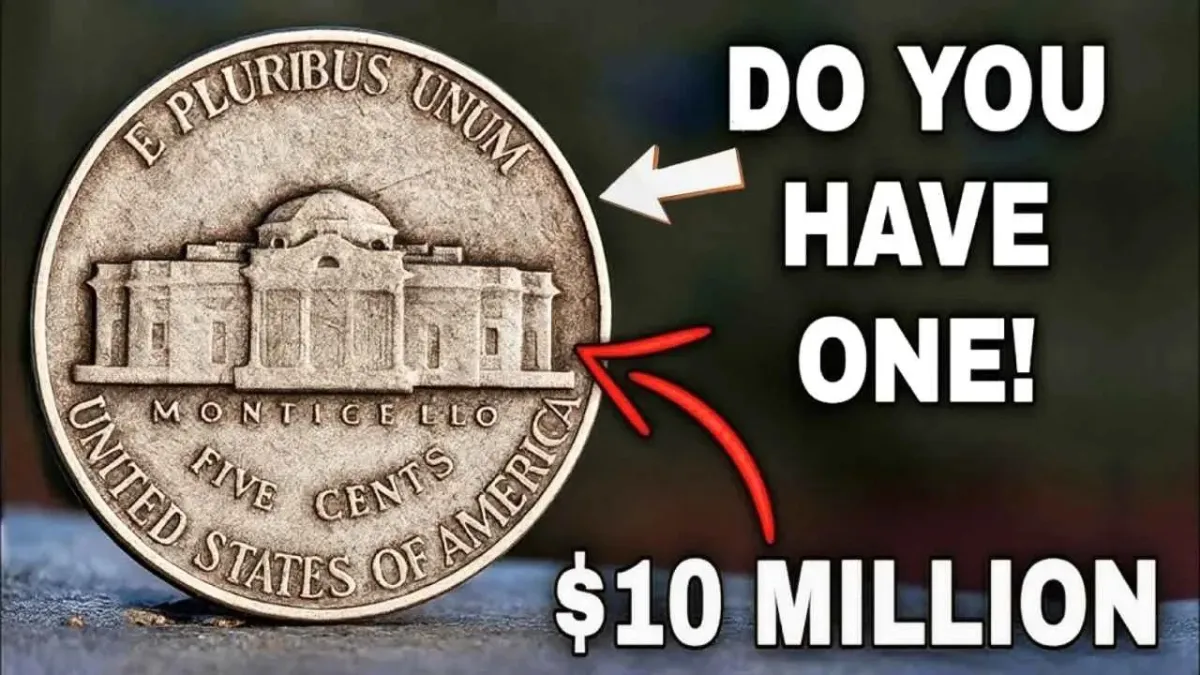Imagine finding a nickel in your change that’s worth millions of dollars!
Picture discovering a simple nickel in your spare change that could turn out to be worth millions. That’s the case with a highly valuable Jefferson nickel from the World War II era that has left coin collectors amazed. Produced between 1942 and 1945, these special nickels were made using different materials due to wartime metal shortages.
A few of them include rare mistakes that dramatically increase their value. Some might still be out there, tucked away in coin jars or wallets. Let’s take a closer look at why this nickel is so rare—and how you might spot one.
A Coin Born from War
During World War II, nickel was an important metal for military production, so the U.S. Mint had to alter the makeup of the five-cent coin. Between 1942 and 1945, Jefferson nickels were minted using a blend of 35% silver, 56% copper, and 9% manganese.
This gave the coin a different look, along with a large mint mark located above the Monticello building on the reverse side. While most of these wartime nickels are only worth a few dollars today, a rare error on one of them has made it a multimillion-dollar collector’s item.
What Makes It So Valuable?
The most sought-after version of this wartime nickel is the 1943 coin with a rare “doubled die” error. This error happens when the coin is struck twice during minting but slightly misaligned, creating a visible double image, especially on the lettering or Jefferson’s profile.
Combine that with its silver content and top condition, and you have a truly rare find. Only a handful of these error coins are known to exist. One was recently valued at a staggering $8 million during an auction. Here’s a breakdown of what to look for:
| Feature | Details |
|---|---|
| Year | 1943 |
| Mint Mark | “P” (for Philadelphia, above Monticello) |
| Error Type | Doubled die on the front of the coin |
| Composition | 35% silver, 56% copper, 9% manganese |
| Condition | Best if uncirculated or in near-mint shape |
These unique characteristics make this particular Jefferson nickel a collector’s treasure.
Could It Be in Your Pocket?
It might sound unbelievable, but some of these wartime nickels are still floating around in circulation. Millions were minted, and many were used just like any regular coin. Experts say there’s a slim but real chance that one of these rare error coins is still out there, waiting to be discovered.
There have been cases of people finding valuable coins in cash drawers, coin rolls, or even in old jars. A quick look through your change could turn into a life-changing moment.
How to Hunt for This Nickel
You don’t need to be a professional coin collector to start searching. Begin by checking any nickels dated between 1942 and 1945, and look for a large mint mark above Monticello on the back. Focus especially on the 1943 nickel with a “P” mint mark.
If you notice any doubled images on Jefferson’s portrait or the inscriptions, you may have found a rare one. If so, avoid spending it—have it examined by a reputable coin dealer or numismatic expert. Be cautious, as counterfeit versions do exist, and only an expert can verify authenticity.
A Piece of History Worth Millions
This unique Jefferson nickel from the WWII era is not just valuable because of its silver or rarity—it’s a part of American history. It tells a story of wartime resourcefulness and unexpected treasures. The possibility that one of these extraordinary coins could still be in circulation adds to the thrill. Next time you receive coins as change, take a closer look—you might just discover a nickel worth millions.
FAQ
Q1: What is a “war nickel”?
A war nickel refers to Jefferson nickels made between 1942 and 1945, which used a silver-copper-manganese alloy due to nickel being needed for military purposes during World War II.
Q2: How can I tell if I have the rare 1943 doubled die nickel?
Look for a 1943 nickel with a large “P” above Monticello and visible doubling in the text or Jefferson’s image. A coin expert can confirm if it’s the rare error variety.
Q3: Are all 1943 nickels valuable?
Not all 1943 nickels are highly valuable. Only those with specific errors like the doubled die and in excellent condition fetch high prices.
Q4: Where can I get a coin professionally appraised?
You can visit a trusted local coin dealer, attend a numismatic show, or use a certified coin grading service like PCGS or NGC to have your coin professionally appraised.
Robby is a passionate numismatist and coin enthusiast with a deep appreciation for rare and historical coins. With years of experience in coin collecting and research, he shares valuable insights, tips, and fascinating stories from the world of numismatics. Whether you're a seasoned collector or just starting out, Robby's expertise helps bring the rich history of rare coins to life.
